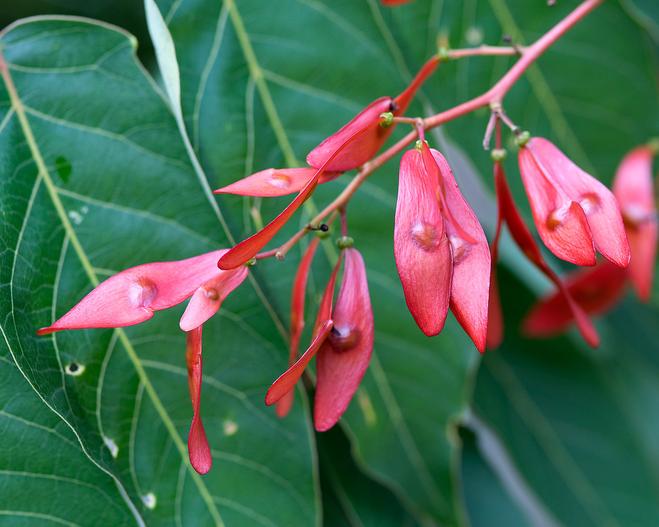Tree Of Heaven
(Ailanthus altissima)
Tree Of Heaven (Ailanthus altissima)
/
/

Plant Image Library
CC BY-SA 2.0
Image By:
Plant Image Library
Recorded By:
Copyright:
CC BY-SA 2.0
Copyright Notice:
Photo by: Plant Image Library | License Type: CC BY-SA 2.0 | License URL: https://creativecommons.org/licenses/by-sa/2.0/ | Uploader: Plant Image Library | Publisher: Flickr























Estimated Native Range
Summary
Ailanthus altissima, commonly known as Tree of Heaven, is a deciduous tree originating from various forested areas in China and Taiwan. This species is known for its rapid growth rate, often reaching heights of 49 feet (15 meters) within 25 years, but it typically does not live beyond 50 years. The form of Ailanthus altissima is upright with a spreading canopy, and it is recognized for its large compound leaves that can be up to 3 feet long. The tree produces small, inconspicuous greenish-yellow flowers in late spring to early summer, which are followed by showy, reddish-brown samaras, or winged seed pods, in the fall.
The Tree of Heaven is valued in its native region for its resilience to tough growing conditions, including poor air quality and compacted soils, making it a suitable choice for urban environments. However, its aggressive root system and prolific seed production make it a problematic invasive species outside its native range. It is adaptable to a wide range of soil types and pH levels, prefers full sun to part shade, and requires medium water with good drainage. Despite its invasive nature, it is sometimes used for reforestation projects or urban greening due to its fast growth and tolerance of pollution. Gardeners should be cautious, as it can spread aggressively and is prone to windthrow due to its weak wood and hollowing trunk with age.CC BY-SA 4.0
The Tree of Heaven is valued in its native region for its resilience to tough growing conditions, including poor air quality and compacted soils, making it a suitable choice for urban environments. However, its aggressive root system and prolific seed production make it a problematic invasive species outside its native range. It is adaptable to a wide range of soil types and pH levels, prefers full sun to part shade, and requires medium water with good drainage. Despite its invasive nature, it is sometimes used for reforestation projects or urban greening due to its fast growth and tolerance of pollution. Gardeners should be cautious, as it can spread aggressively and is prone to windthrow due to its weak wood and hollowing trunk with age.CC BY-SA 4.0
Plant Description
- Plant Type: Tree
- Height: 60-70 feet
- Width: 30-80 feet
- Growth Rate: Rapid
- Flower Color: Green
- Flowering Season: Spring
- Leaf Retention: Deciduous
Growth Requirements
- Sun: Full Sun, Part Shade
- Water: Medium
- Drainage: Fast, Medium, Slow
Common Uses
Bee Garden, Deer Resistant, Drought Tolerant, Erosion Control, Fragrant, Salt Tolerant
Natural Habitat
forested areas in China and Taiwan
Other Names
Common Names: Varnish Tree , Tree-Of-Heaven , China-Sumac , Stinktree , Chinese Tree-Of-Heaven , Chinese Sumac , Ailanthus , Skink Tree , Hemelboom , Skyrækker
Scientific Names: Ailanthus altissima , Ailanthus glandulosa , Ailanthus vilmoriniana , Ailanthus giraldii , Ailanthus sutchuenensis , Ailanthus altissima var. altissima , Ailanthus altissima f. erythrocarpa , Ailanthus giraldii var. duclouxii , Ailanthus peregrina , Rhus cacodendron
GBIF Accepted Name: Ailanthus altissima (Mill.) Swingle